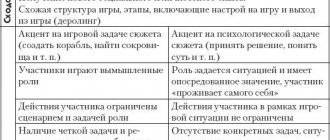Have you noticed how emotions affect your body and well-being? When you are calm or feel safe, your breathing slows down and deepens. This is how the parasympathetic nervous system works, which has a relaxing effect. Opposite emotions - fear, pain, tension, discomfort - speed up breathing and make it shallow. This activates the sympathetic nervous system, which is responsible for the body's response to stress. The same effect occurs in the opposite direction: the state of the body affects emotions. When the face smiles, the brain produces pleasant emotions. When you control your breathing, calm returns to you.
People who, for one reason or another, suffer from difficulty breathing are more likely to experience anxiety and panic attacks.
Scientists estimate that more than 60% of patients with chronic obstructive pulmonary disease suffer from anxiety or depressive disorders. These disorders are often caused by mechanical factors: the difficulties experienced by patients lead to increased breathing and increased physical discomfort and restlessness.
Rapid breathing can contribute to panic attacks, and this completes a vicious circle: fear causes rapid breathing, which increases fear. Back in 2005, Georg Alpers (University of Mannheim, Germany) and his colleagues observed unconscious hyperventilation in people suffering from driving phobia.
Regardless of the cause of fear or anxiety, you can calm yourself using breathing techniques to relax. The healing power of combining calming thoughts with deep breathing goes deep into the past, when people sought to achieve harmony in the mind, body and environment.
Calming Breath
This is a remedy, not a panacea. Some breathing techniques that yogis use have undergone clinical trials, others are just waiting in the wings. However, you can calm your mind with breathing. This means that such techniques work, and we can adopt them.
Equal breathing (samavritti)
Sit in a comfortable position, keeping your back straight. Start inhaling, silently counting to four, then take a short pause. After this, exhale, also counting to four. Breathe through your nose all the time. If you want to make the practice more challenging, try counting to six or eight. Make sure that all three components (inhalation, pause, exhalation) are the same length.
When to do it
Anywhere, anytime. This technique calms the nervous system and reduces stress. Try practicing it before you go to bed. Especially if you are one of those people who find it difficult to get rid of thoughts about work and problems in the evening. Practice will replace counting sheep and set you up for sleep.
Introduction
During times of severe stress to which a person is exposed, he needs an increased amount of oxygen compared to normal, since it is consumed faster. But a tense state, which requires extreme concentration of attention, on the contrary, slows down breathing.
Human nervous system
Breathing exercises to calm the nervous system help you cope with what is happening and find yourself in your usual state. Anyone who has learned to breathe correctly can easily control their mood.
Belly breathing
Sit in a comfortable position or lie on the floor. Place one hand on your stomach, the other on your chest, and take a deep breath through your nose. Make sure that the shoulders are relaxed, the chest does not expand, and the diaphragm is working - the muscular partition that separates the chest cavity from the abdominal cavity. When you inhale, it contracts and falls, causing the stomach to protrude forward, and when you exhale, it rises and pushes air out of the lungs.
As you inhale, inflate your stomach, and as you exhale, pull it towards your spine. Try to take 6-10 slow breaths per minute. With this type of breathing, the body is better saturated with oxygen.Respiratory pattern of diaphragmatic breathing and pilates breathing in COPD subjects..
When to do it
Before an exam, an interview, and in any stressful situation when you need to quickly calm down. If you want to feel the long-term effect, practice this breathing for 10 minutes every day. For example, immediately after waking up or in the evening before bed. This will have a positive effect on both the cardiovascular system The physiological effects of slow breathing in the healthy human. and digestiveDiaphragmatic Breathing for GI Patients. systems, and on the general mental The Effect of Diaphragmatic Breathing on Attention, Negative Affect and Stress in Healthy Adults. health.
Alternate breathing through the nostrils
Sit in a position that is comfortable for you, keeping your back straight. With your right thumb, close your right nostril and take a deep breath through your left. At the peak of your inhalation, close your left nostril with your ring finger and exhale through your right. Try to fill and empty your lungs to the limit.
Do five of these cycles, then switch nostrils. That is, inhale through the right and exhale through the left. After this, take five inhalations and exhalations through both nostrils. Don't rush or strain, breathe relaxed.
When to do it
When you need to quickly concentrate, cheer up and recharge your batteries. Yogis also believe that this practice develops a state of harmony in a person.
Psychogenic asthma
In general, bronchial asthma refers to a pathology of the respiratory system. Its development is associated with changes in the structure of the bronchi against the background of immune failures, that is, it is a very specific disease, the etiology of which is not related to mental factors.
People suffering from this disease may develop a condition called psychogenic asthma. This happens when attacks of suffocation, the main symptom of the disease, are provoked by nervous overstrain, both positive and negative, whereas in normal cases this occurs under the influence of cold, infections or physical exertion.
Under the influence of super-emotions, histamine is released. This is one of the main mediators of inflammation. It causes bronchospasm. The result is a dry cough, shortness of breath and an attack of suffocation.
Psychogenic asthma often develops in women during the menstrual period and in children, whose psyche is still quite unstable and very sensitive.
Shining Skull (Kapalabhati)
Inhale and then exhale sharply through your nose, engaging the lower abdomen - the muscles that form its front wall from the lower ribs to the pelvis. They should contract, and the stomach should move inward towards the spine - due to this, exhalation will occur. Try to exhale air in one stream. In this case, the diaphragm should be relaxed both when inhaling and exhaling.
Perform 10 such inhalations and exhalations at a comfortable pace. If you feel dizzy during the process, it means you are putting in too much effort. Take a break and relax.
Please note that this technique has contraindications: active menstruation, pregnancy, high blood pressure, heart problems.
When to do it
The technique is great for helping you wake up and clear your mind. It is good to use in the morning or before training. Plus, practice can become training in itself. Since it actively engages the abdominal region, you will strengthen your abs.
Basic requirements for breathing exercises
More than one method of help has been developed - respiratory exercise therapy for diseases of the nervous system. The four most commonly used are:
- Through inhalations, the correct direction of which is controlled by the collarbones, oxygen completely fills the upper parts of the lungs.
- The ribs move from contraction to full expansion - full breathing occurs.
- The stomach also helps to breathe correctly: abdominal breathing moves the diaphragm, this leads to involuntary massage of the internal organs, the greatest amount of oxygen enters the blood until complete saturation.
- The concept of wave-like movement suggests that not only the lungs, but also the ribs and abdomen are involved in the process.
These four main options are a good basis for introducing additional breathing techniques that calm the nervous system. It becomes stronger and more resistant to possible stress in the future.
Breathing 4‑7‑8
Find a comfortable position, sitting or lying down, and close your eyes if desired. Press the tip of your tongue to the roof of your mouth, open your mouth slightly and exhale completely. Close your mouth and inhale through your nose, counting to four. Then count to seven, holding your breath the entire time. After this, exhale slowly with a whistle, counting to eight. Repeat the 4-7-8 breathing pattern several times until you feel calm.
When to do it
This technique is a good alternative to equal breathing. Practice it before bed to relax and fall asleep faster. According to the author of the technique, Andrew Weil, the technique will allow you to feel connected to the body, as well as distract from everyday thoughts that prevent you from falling asleep.
Ways to quickly relieve psycho-emotional and muscle tension
“The human mind is such that it can make hell heavenly and heaven hell”
D. Milton, “Paradise Lost”
Emotional tension is often confused with stress, although these concepts should be separated. We can say that emotional tension is the cause, but the state of stress is the consequence. Emotions, undoubtedly, decorate our lives and make it more complete. Joy, love, surprise, gratitude - all these are emotions that we experience constantly. It’s good if a person knows how to throw out his emotions from time to time. Someone goes to a psychologist to talk about their difficulties, about what is “boiling.” Someone shares their problems, fears and grievances with friends and loved ones. But how can you cope with tension if you are left alone with yourself? I offer 10 express methods for relieving mental stress, accessible to everyone.
- Deep breathing exercises
Inhale slowly and deeply through your nose, filling your stomach and then your chest with air. Slowly count to four 1-2-3-4. Go at your own pace. Exhale through your mouth as slowly as possible, pursing your lips as if you are about to whistle. When your lungs feel empty, count to four again. Start the exercise again and repeat 3-4 times.
- Quick relaxation
In a stressful situation, the ability to quickly relax. At the beginning, you will need to apply the previous method of relieving emotional stress, deep breathing exercises two or three times, counting the inhalation and exhalation to yourself... After achieving general relaxation, you need to feel all the muscles of your body. Focus on your facial expression and body position. If you feel excessive muscle tension in any part of the body (for example, in the right arm), then tense and then relax various muscle groups in this part of the body (tighten and relax the biceps, forearm muscles, etc.). Try to feel your body and how it relaxes. This technique can also be practiced in an imaginary stressful situation. Repeat the exercise once a week.
- Concentration
For this exercise, it is good to concentrate on the things that surround you at the moment. Look around and carefully examine the room you are in. Concentrate on broadcasting the same color, for example, remember everything is white. Fix the color white with the association of white milk, white clouds, etc. Afterwards, collect all the items one by one, stopping at each item separately. Exercise will help you take your mind off emotional stress. Attention will be diverted to the rational perception of the environment.
- A change of scenery
A change of environment is a good help to relieve stress. If you are in a bad mood, feel tense, or the situation is depressing, then leave the room where acute stress occurred. You can just go outside, if you can, take a walk in the park, where you can be alone with your thoughts. Look around, see what surrounds you, observe nature. If it's the weekend, then be sure to go out into nature (when the weather permits), go to the movies, meet friends, do something unusual.
Be sure to plan an unforgettable trip on your vacation. The trip will allow you to meet new people and immerse yourself in a new culture. Unfamiliar places allow you to see the world around you in all its glory. Be sure to take a notepad and camera with you. Observe everything new and write down everything that comes to mind. New impressions will prolong the positive emotions from the trip for a long time.
- Relaxation
Lie on your back. Concentrate on your breathing. Slowly relax your body. Begin to inhale slowly through your nose. Fill the lower chest, then the middle and upper chest and lungs. Remember to do this slowly. Hold your breath for a second or two. Then you need to calmly and easily release the air. Wait a few seconds and repeat the exercise. Imagine that you are in a calm situation, surrounded by palm trees and a warm, gentle ocean. You can continue this breathing technique as long as you like until you feel sleepy.
- Abstraction
Engage in some kind of activity - no matter what: start washing clothes, washing dishes or cleaning. It doesn't matter, any activity you choose will help you take your mind off things.
- Music
Choose your favorite quiet, soothing music. Make yourself comfortable and listen in a relaxed environment.
- Arithmetic
Calculate how many days are left until the significant days in your life. For example, how many days are left until your birthday, until the significant dates in your life that you are waiting for. Good memories, when they were, and how much has passed since then.
- Communication
Talk about an abstract topic with anyone you know. He may be next to you, or you can call him on the phone. This will give you a distraction at this stage.
- Warm shower
Warm water has a relaxing effect on the muscles, thereby relieving tension. Water jets also promote relaxation and relaxation through a gentle massaging effect. The shower can also be contrasting, it all depends on your personal preferences.
All these recommendations will help you quickly get rid of psycho-emotional stress and allow you to look at the world from a different perspective. Don't let your emotions rule your life. Remember that it depends only on you whether your life will be a continuous holiday or a series of failures.
List of used literature:
When preparing the article, data from Internet resources was used.
Timoshenko G., Leonenko E., “Working with the body in psychotherapy.”
Prepared by psychotherapist D.A. Ignatovich,
medical and psychological department
Focused Breathing
Take a comfortable position lying down in a quiet, comfortable place. Take a deep, slow breath in through your nose, concentrating on the sensations in the process. Feel your stomach and chest rise. Imagine that the air you breathe is filled with peace and tranquility. Feel that they come to you with him.
Exhale slowly. Imagine that stress and tension are leaving you along with the air. With the next exhalation, add a word that you will concentrate on - for example, “peace.” Continue breathing at this rhythm for 10–20 minutes.
When to do it
In stressful situations, as well as in the evening to relieve tension and get ready for relaxation.
Effect on the body
In different stressful situations, any animal body reacts in the same way: increased blood pressure, increased muscle tension, dilated pupils and increased hormonal activity. In this way, the body prepares to respond to a perceived threat, from which it must either run away or attack. If a person continues to be in a state of “high alert” for a long period of time, then the immune system and internal organs are negatively affected, which ultimately causes damage to health.
Everyone, at least once in their life, has experienced a single insomnia as a result of very strong experiences, or been briefly in a depressed mood, or temporarily lost their appetite. Typically, such consequences occur as a result of an overt stressful event or excessive emotional stress and are usually characteristic of acute stress. However, the greatest danger to human health is chronic stress, when its symptoms take on the character of habitual unsatisfactory well-being.
Adolescence is one of the most difficult periods in life in many ways, including the development of a child’s skills to cope with stressful situations. It will not be possible to completely eliminate stress factors from everyday life, because negative experiences can be caused by anything, but it is possible to teach a teenager to cope with the consequences of stress. You can start with the simplest thing: by eliminating these consequences at the physical level.











